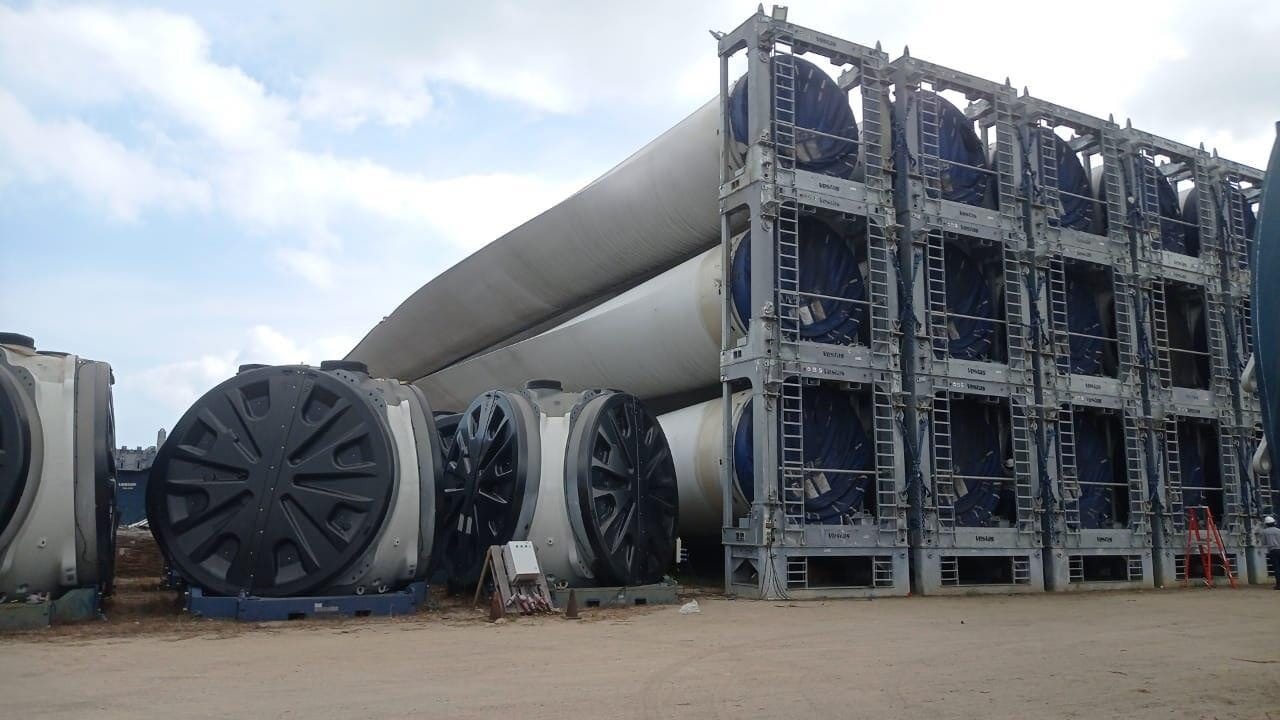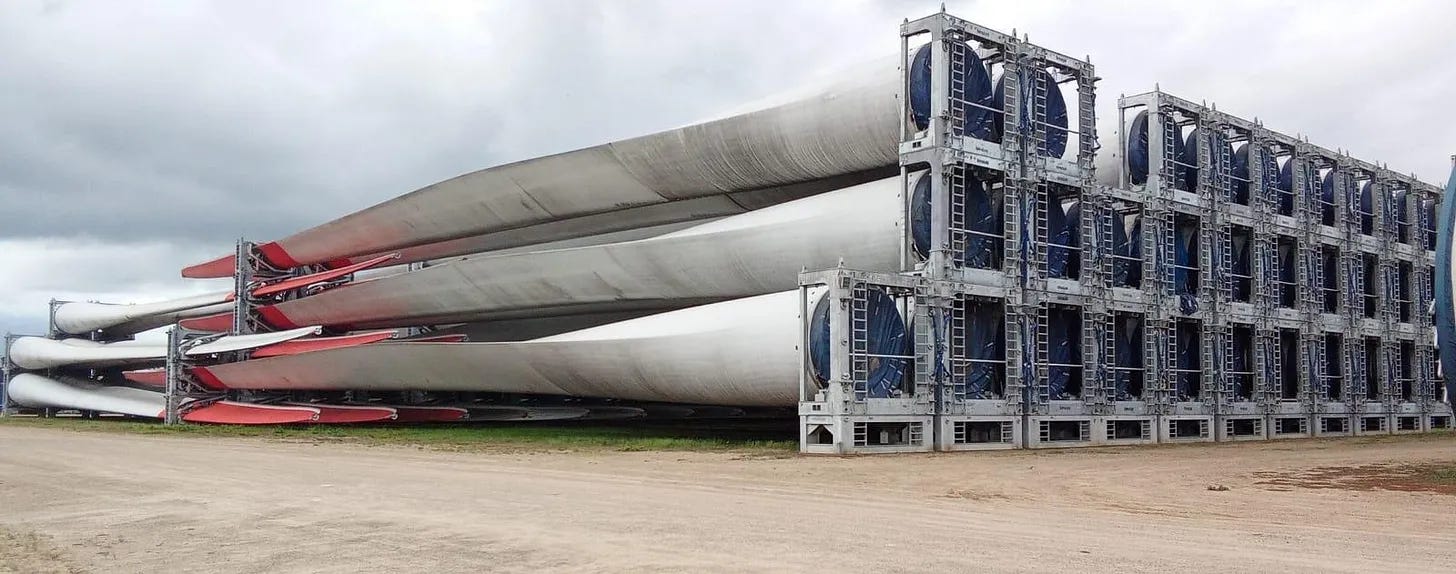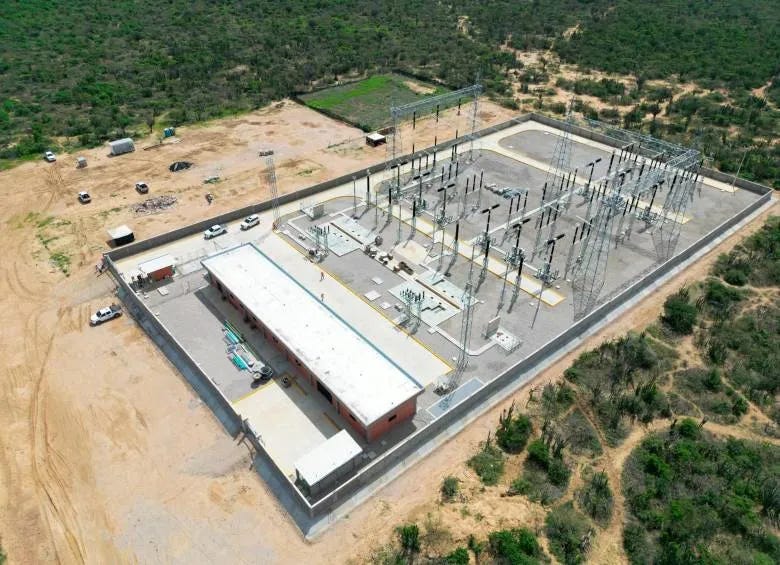Windstory #15 - 90 brand-new wind turbines looking for a buyer
EDPR puts up for sale 90 Vestas V162-5.6 MW originally planned for installation in Colombia after abandoning two projects
Hello everyone and welcome to a new issue of Windletter. I'm Sergio Fernández Munguía (@Sergio_FerMun) and here we discuss the latest news in the wind power sector from a different perspective. If you're not subscribed to the newsletter, you can do so here.
Windletter is sponsored by:
🔹 Tetrace. Reference provider of O&M services, engineering, supervision, and spare parts in the renewable energy market. More information here.
🔹 RenerCycle. Development and commercialization of specialized circular economy solutions and services for renewable energies. More information here.
🔹 Nabrawind. Design, development, manufacturing, and commercialization of advanced wind technologies. More information here.
Windletter está disponible en español aquí
Windstory is the articles section of Windletter, where we publish single-topic analyses and share interesting stories from the wind energy sector.
From time to time, without a set schedule, a new edition of Windstory will arrive in your inbox. Subscribe here.
Hello everyone! How’s everything going? Hope you’ve been able to enjoy a well-deserved break. In my case, I’m already back (time flies!) and feeling recharged.
First, a quick reminder of the latest content we’ve published here:
The article on Norvento’s wind farm on Corvo Island — you can read Part 1 here and Part 2 here. By the way, in case there was any doubt, it’s not a sponsored post, I just found the project genuinely interesting and unique, and thought the community would enjoy it. What did you think? Did you like it?
The article sponsored by Ravenwits, the startup using artificial intelligence to forecast renewable energy generation. You can read it here.
That said, the most read stories from the last edition were: the video of the floating wind project components (Eolmed and EFGL) at the port, the signs of a shift in investment strategies from major utilities, the paper on turbine spacing in floating wind farms.
Today we’re going with a single-topic edition (a subject that tends to draw a lot of attention), but next week we’ll be back with the usual news round-up — and to be honest, so much has happened lately that I’ve got more than enough content ready.
🌬️EDPR sells 90 vestas V162-5.6 MW turbines that were to be installed in Colombia
Last December, EDP Renewables announced its decision to abandon the Alpha and Beta wind projects in Colombia, which together amounted to 492 MW of capacity.
These projects represented EDPR’s entry into the Colombian market and would have given a major boost to wind power in a country that currently has only 34 MW of installed wind capacity, an extremely low figure for a nation with over 50 million inhabitants, a land area twice the size of Spain, and certain regions with outstanding wind resources, as we will see later.
The turbines selected for both wind farms were 90 Vestas V162-5.6 MW. This was the first order for the Vestas EnVentus platform in Latin America and also the one that helped Vestas reach 2 GW in total global orders for this platform.
Located in the La Guajira region, EDPR reported an expected generation of 2.5 TWh/year for both projects, equivalent to around 5,000 full-load hours (55–60% capacity factor), an exceptional wind resource for onshore wind farms and even surpassing many offshore projects.
📉 Reasons for the abandonment of the project
There were several reasons behind the abandonment of these projects, but a short summary without going into too much detail would be as follows:
Although EDPR obtained the permits for the wind farms in 2019, the license for the 81 km evacuation line suffered significant delays, especially during the COVID-19 pandemic.
In 2022, the change of government in Colombia brought new environmental requirements for the line. Additionally, the number of indigenous communities involved in the prior consultation process doubled (from 56 to 113), which added considerable delays. In an interview, EDPR stated that it had 30 people dedicated to relations with the Guajira communities.
There were also other issues such as increased construction costs, the devaluation of the peso, cancellation and/or delay of PPA contracts due to delays, a decree that facilitated processes being overturned in court, etc.
In short, it can be said that this was mainly a matter of legal certainty. For those interested, more details can be found in EDPR's official statement here.
Everything led the Portuguese company to ultimately abandon the project for not meeting the investment criteria and risk profile. The company has also announced that it will take legal action to protect its interests in Colombia.
In fact, EDPR itself has (or perhaps had) two other wind farms under development in the area, Elipse and Omega, which would add another 500 MW. We’ll have to see what ultimately happens with those parks, but without a doubt, this kind of situation makes Colombia a much less attractive country for investment. Investments favor legal certainty.
EDPR has not been the only one to halt or abandon projects in the country. Enel Green Power did the same with the Windpeshi wind farm (205 MW) in May 2023. Celsia also announced to the market in February last year the sale of the Acacia and Camelias projects, which total 330 MW, and the relocation of the equipment to a new project in Peru, in this case Nordex N155/5.X wind turbines.
💸 A €700 million hole
Alongside the announcement of the project abandonment, EDPR also informed the market of estimated losses amounting to €700 million. The reason is that a large portion of the CAPEX, primarily the wind turbines and a significant share of the BOP components and substations, had already been contracted.
For some reason, EDPR decided to activate the contracts, start construction, and proceed with the procurement of components without having secured 100% of the permits, likely due to scheduling pressures and the assumption that they would be granted.
The consequence, aside from the enormous financial impact, is that the wind turbines have been stored at Puerto Brisa (see on Maps) since mid-2021. They even bear the old EDP Renováveis logo. You can also see the Beta wind farm substation partially built (see on Maps and photo below), as well as the excavated turbine foundations (see on Maps).
Honestly, when I first read the news, I could hardly believe it.
📦 The wind turbines are now looking for a new destination
Most likely, EDPR has tried to find a place for these turbines in another project in its portfolio, or perhaps to sell them directly to another developer. However, the reality is that this is much more difficult than it might seem. In the end, the wind turbines that can be installed in a wind farm are strictly limited by administrative permits, which usually specify parameters such as unit capacity, hub height, and tip height, among others. And let’s not forget: 90 wind turbines is a lot.
Just to make things worse, these turbines are 60 Hz and 34.5 kV versions, which limits their use to markets with these characteristics (at least the 60 Hz; the voltage issue could potentially be solved by replacing the turbine’s transformer).
Therefore, EDPR has recently announced the sale of the 90 V162-5.6 MW units, as well as many other BoP components such as transformers, high-voltage circuit breakers, cables, switchgear, electrical cabinets, etc.
💼 About the sales process
The sale is being managed through the website Escrapalia, which specializes in the management of industrial assets and the marketing of second-life equipment.
The wind turbines are complete, including:
90 nacelles.
90 hubs.
90 powertrains.
450 tower sections (90 towers divided into 5 sections each).
270 blades of 79 meters.
Cooling units and other assembly components.
On the Escrapalia website, there is a virtual tour with 360º images where all the components can be seen. Below, I leave a drone video.
Additionally, according to the available information, EDPR has made efforts to provide a certain level of confidence to potential buyers of these turbines:
To ensure the preservation and availability of all components, Vestas follows a structured preventive maintenance protocol, while an external certification company conducts periodic inspections to certify the condition of the assets on behalf of EDPR.
All documentation is available: complete inventory, condition reports, technical documentation.
Site visits to the turbines can be arranged.
Furthermore, interested parties can submit offers for different scopes:
The entire lot of 90 wind turbines.
Individual turbines (1, 2, 20, or any other number).
Specific components, such as blades, nacelles, or powertrains. Note that it should also be considered that the V162 turbines from that time may have undergone design changes compared to the current ones.
Honestly, for developers who have the ability (or luck) to fit this model into one of their projects, it seems like a great opportunity to purchase "brand-new" turbines at a significant discount. And in times of tight margins, a substantial discount can make all the difference.
Ultimately, a very particular case, which may have happened before in the sector, but I highly doubt at this scale. And certainly not through a public auction of the assets.
And you, what do you think? Would you dare to install these turbines in your project? I'm reading 👀
Thank you very much for reading Windletter and many thanks to Tetrace, RenerCycle and Nabrawind our main sponsors, for making it possible. If you liked it:
Give it a ❤️
Share it on WhatsApp with this link
And if you feel like it, recommend Windletter to help me grow 🚀
See you next time!
Disclaimer: The opinions presented in Windletter are mine and do not necessarily reflect the views of my employer.
















It will be interesting to see where these components end up. An expensive lesson for the people who authorised procurement before permits were approved!